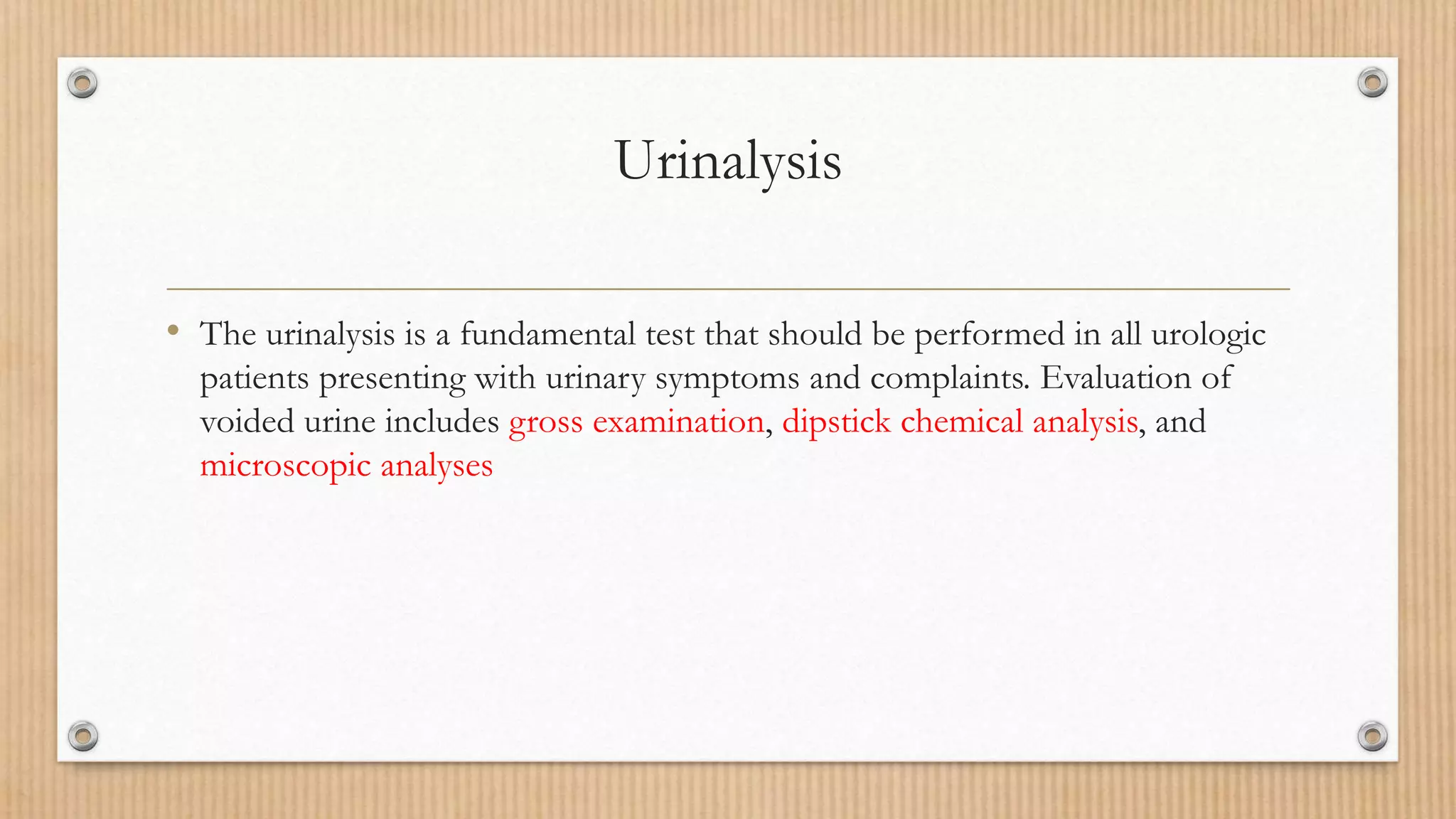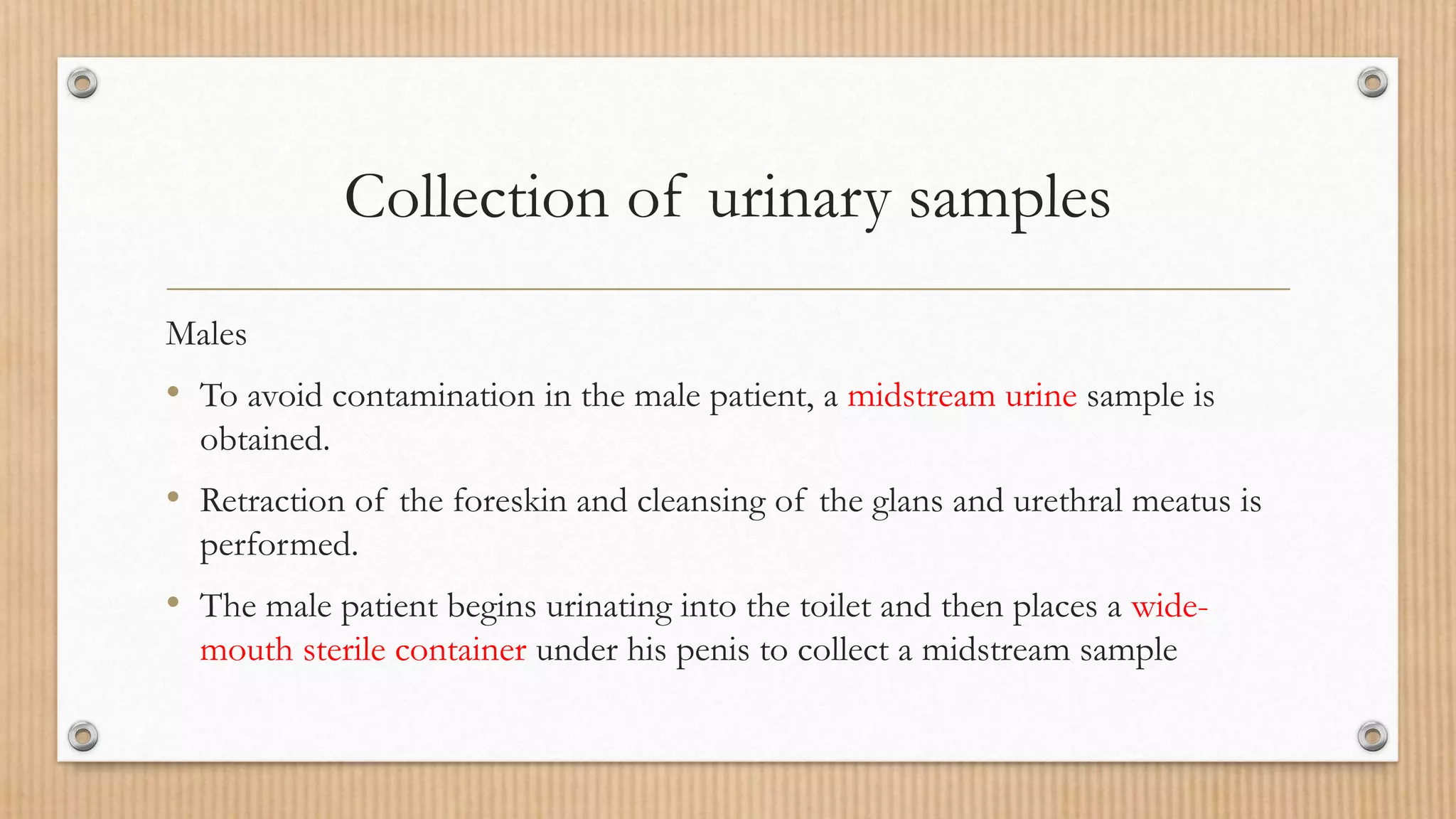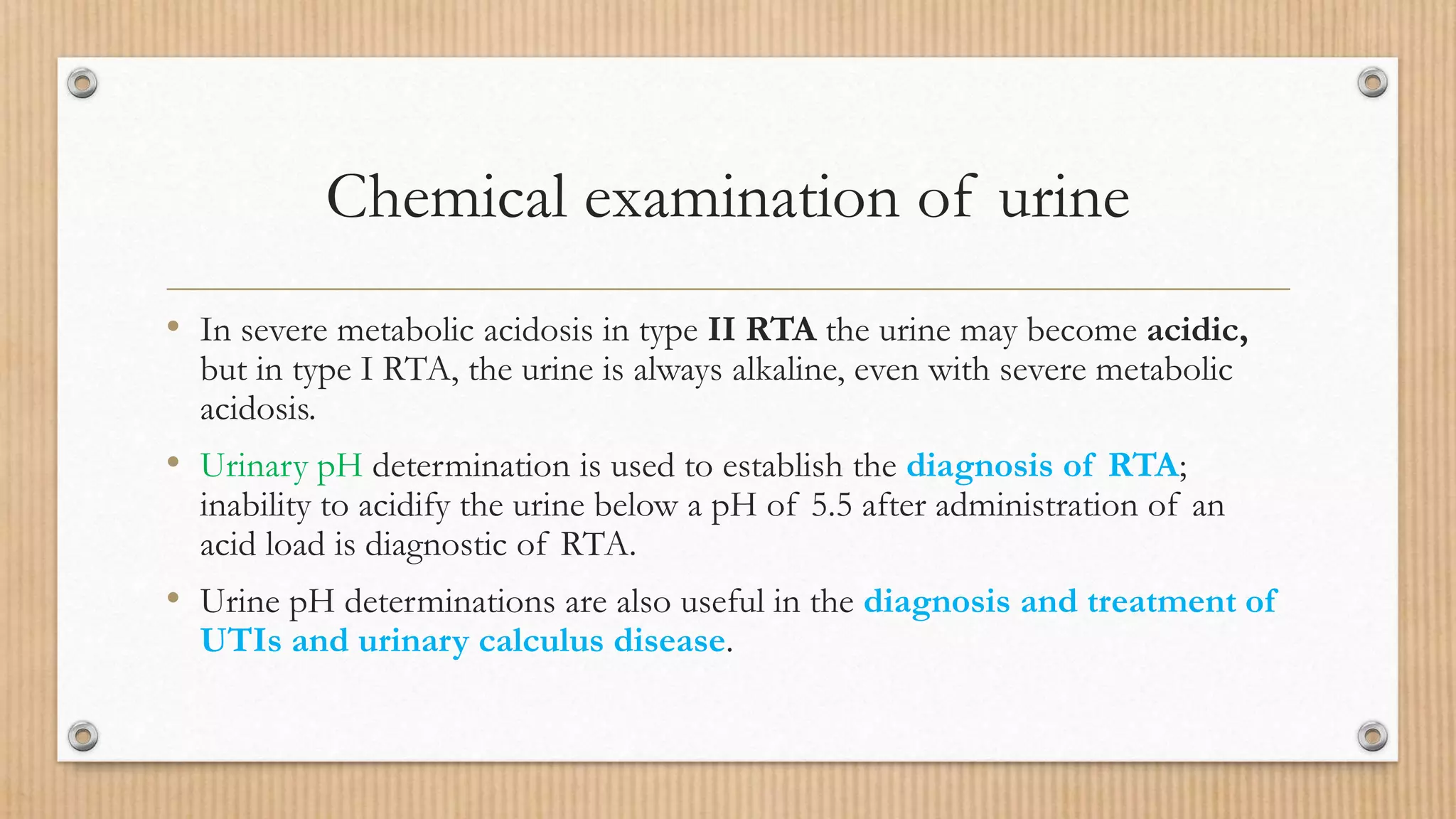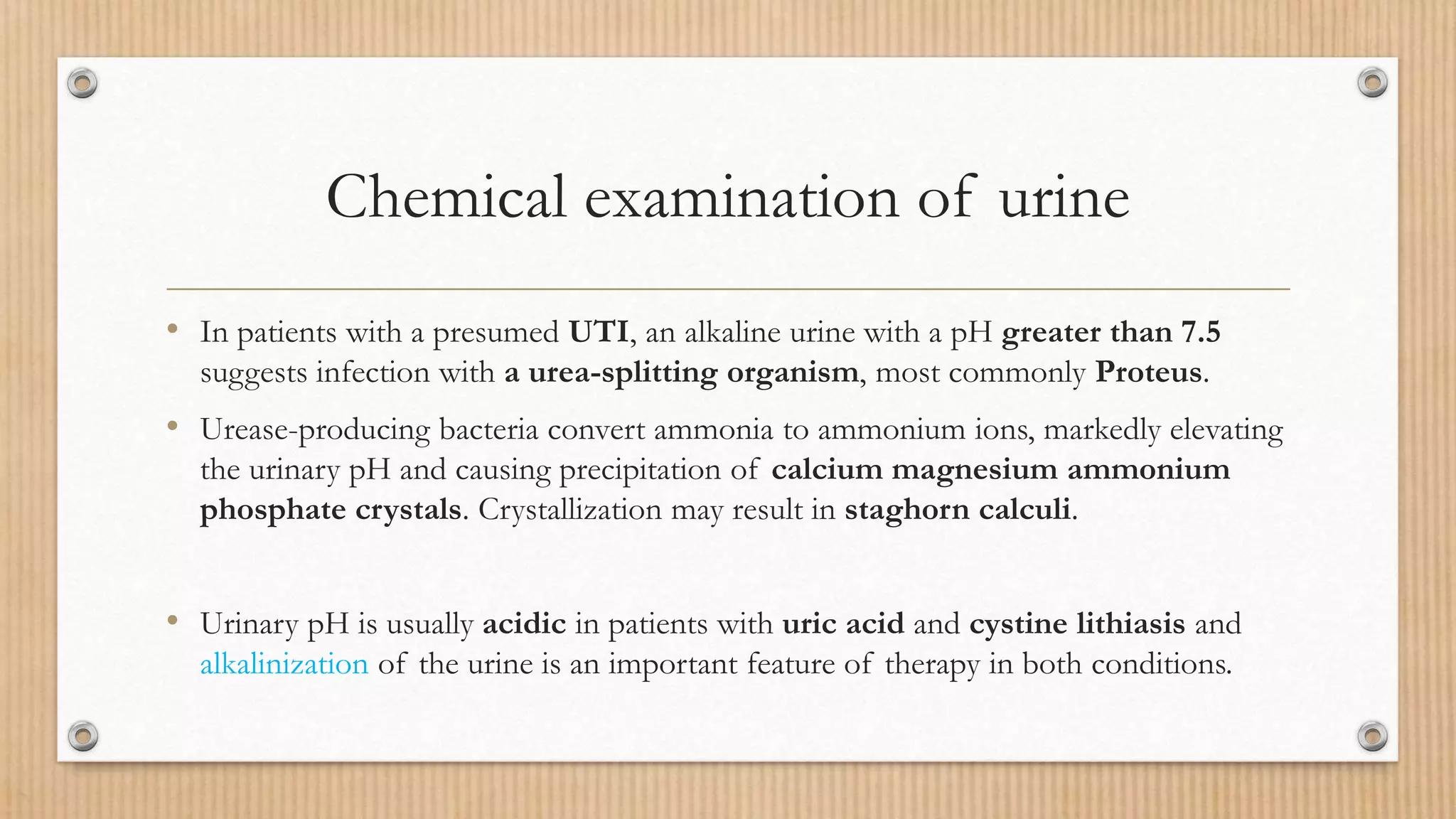This document discusses urinalysis procedures and analyses. It describes how to properly collect urine samples from males, females, neonates, and through catheterization. Midstream samples are recommended for males to avoid contamination. Dipstick testing and microscopic examination are used to analyze the urine's color, turbidity, specific gravity, pH, and for the presence of blood, protein, glucose, ketones, bilirubin, and urobilinogen. Abnormal findings on urinalysis can indicate infections, kidney diseases, diabetes, or other conditions. Proper collection and handling of urine samples is important for obtaining accurate test results.








































































